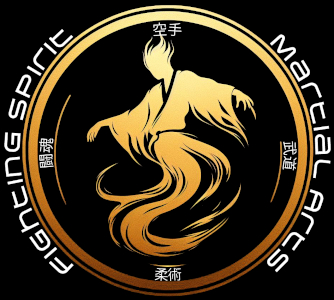
Sensei Masami Tsuruoka is widely regarded as one of the most influential figures in the history of Canadian martial arts. His legacy is one of perseverance, dedication, and excellence, and his impact on the world of martial arts cannot be overstated. Born on November 30, 1929, in Tokyo, Japan, Tsuruoka’s journey to becoming a master of martial arts is an inspiring tale of hard work, determination, and the pursuit of excellence.
Tsuruoka’s journey in martial arts began at the young age of 11 when he started training in Kendo, a Japanese martial art that involves sword fighting. Kendo helped Tsuruoka develop the discipline and focus that would serve him well in all aspects of his life. By the time he was 16, Tsuruoka had earned his first-degree black belt in Kendo and was ready to explore other martial arts.
In 1946, Tsuruoka was introduced to Judo, another Japanese martial art that emphasizes throws, pins, and submission holds. He quickly fell in love with Judo, and within a few years, he earned his second-degree black belt. Tsuruoka’s dedication to Judo was unwavering, and he continued to train and compete in Judo tournaments in Japan for the next several years.
Tsuruoka began studying Karate under Chitose in the early 1950s, while he was still living in Japan. He became one of Chitose’s top students, and he continued to train with him for many years. In the 1960s, Tsuruoka made the decision to leave Japan and move to Canada, seeking new opportunities and challenges. He settled in Vancouver, British Columbia, where he started teaching Judo and Chito-Ryu Karate to his own students. Tsuruoka’s dedication and skill quickly drew the attention of the local community, and his reputation as an innovator in ideas and techniques grew.
Over the next few years, Tsuruoka’s influence on the world of martial arts in Canada continued to grow. He founded the Tsuruoka Judo Club, which quickly became one of the most respected and successful Judo clubs in Canada. The club was known for its rigorous training program, and Tsuruoka’s attention to detail and commitment to excellence helped produce some of the best Judo practitioners in the country.
Tsuruoka’s impact on the Canadian martial arts community wasn’t limited to Judo or Karate, however. In the 1960s, he began exploring other martial arts, including Aikido, and Jiu-Jitsu. He trained with some of the best practitioners in each of these arts, absorbing their techniques and philosophies and incorporating them into his own teaching.
Tsuruoka’s exploration of these other martial arts was not without its challenges, however. In the early days of his training, there was a great deal of animosity and competition between different martial arts schools, and Tsuruoka often found himself at the center of these conflicts. But he refused to be deterred, and he continued to seek out the best teachers and practitioners in each art, always striving to improve his own skills and knowledge.
Over the years, Tsuruoka became one of the most respected and influential figures in the Canadian martial arts community. He was a tireless advocate for the sport, and his commitment to excellence and dedication to his students inspired a generation of martial arts practitioners. He was known for his strict training regimen, but also for his warmth and kindness, and his ability to inspire his students to reach their full potential.
One of Tsuruoka’s most significant contributions to the world of martial arts was the development of a new form of Karate, known as Tsuruoka Karate. Drawing on his years of experience in Judo, Aikido, and Jiu-Jitsu, Tsuruoka created a unique form of Karate that emphasized throws, joint locks, and pressure points, rather than the more traditional striking techniques. Tsuruoka Karate quickly gained popularity, and Tsuruoka became known as one of the most innovative and forward-thinking martial arts instructors in Canada.
In addition to his work in martial arts, Tsuruoka was also deeply involved in the Canadian community. He was a strong advocate for social justice and civil rights, and he worked tirelessly to promote understanding and cooperation between different cultural groups. He was known for his generosity and his commitment to helping others, and he devoted a great deal of his time and energy to supporting charities and other organizations.
Tsuruoka continued to teach and train well into his later years, and he remained a beloved and respected figure in the Canadian martial arts community until his passing in 2018. His impact on the world of martial arts is immeasurable, and his legacy continues to inspire generations of practitioners to this day.
In conclusion, Sensei Masami Tsuruoka’s life and legacy are a testament to the power of hard work, dedication, and the pursuit of excellence. His journey from a young Kendo student in Japan to one of the most influential figures in the Canadian martial arts community is a story of perseverance and resilience that continues to inspire martial artists around the world. Through his innovative approach to Karate and his unwavering commitment to his students and community, Tsuruoka left an indelible mark on the world of martial arts, and his legacy will be remembered for generations to come.
Sources:
- “Masami Tsuruoka” Canadian Black Belt Hall of Fame. http://www.canadianblackbelthalloffame.com/masami-tsuruoka.html
- “Sensei Masami Tsuruoka: The Tsuruoka Legacy” Vancouver Martial Arts. https://www.vancouvermartialarts.ca/tsuruoka-legacy/
- “Tsuruoka Karate” Tsuruoka Martial Arts. https://tsuruokamartialarts.com/tsuruoka-karate/
